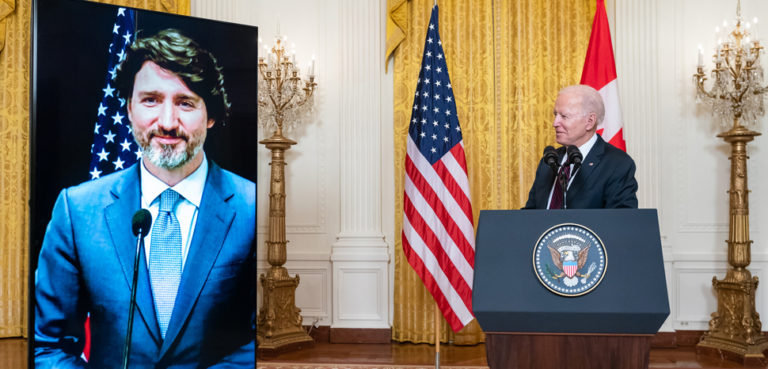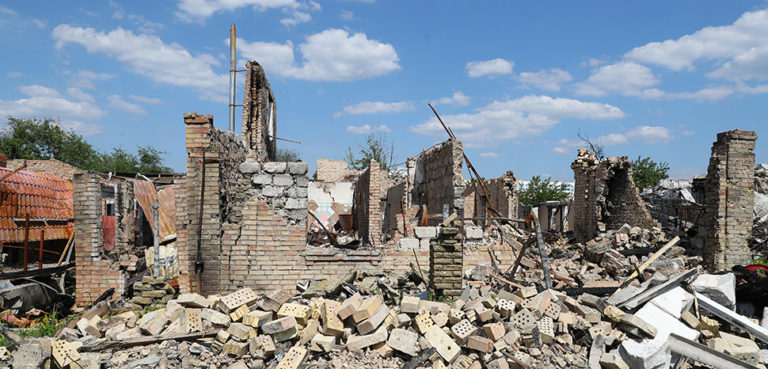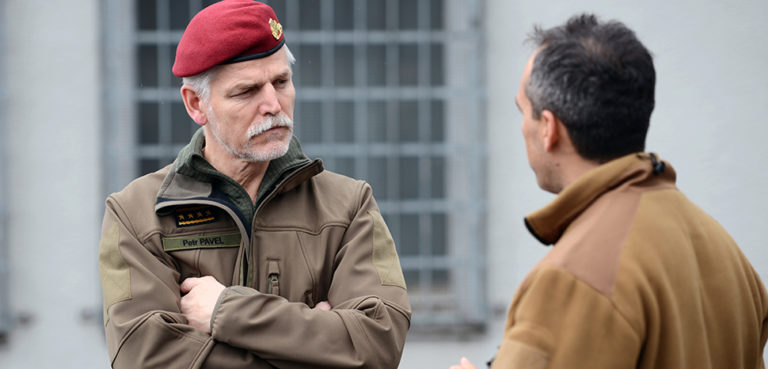The 44-day Second Karabakh War in 2020 was won by the Azerbaijan military and security forces. Ukraine is successfully fighting the Russian army which believed it would conquer the country in a few days. Azerbaijan did not and Ukraine is not relying upon foreign troops. Azerbaijan and Ukraine have one factor in common – they used NATO military equipment and military training. Armenia relied exclusively on Russian military equipment and training.
During the Second Karabakh war, there were false claims Middle Eastern and Turkish mercenaries had been recruited to fight for Azerbaijan. In Ukraine, the only mercenaries -from India, Nepal, Africa, and elsewhere – are fighting for Russia.
If there had been Middle Eastern and Turkish mercenaries fighting for Azerbaijan, some of them would have been inevitably captured, held prisoner, and shown at press conferences by Armenia. Foreigners fighting for Ukraine are invited by a legitimate government to join the International Legion which is modelled on the French Foreign Legion.
Azerbaijan won the 2020 and 2023 wars because it had invested in military equipment from Israel, Türkiye, and elsewhere; Armenia used Russian military equipment. While most focus has been on Turkish-Azerbaijani military cooperation, in fact Israel’s security and military partnership with Azerbaijan predates Turkey’s by a decade. Israel has refused to provide Ukraine with military equipment.
As we have witnessed in Azerbaijan’s 2020 and 2023 wars with Armenia and the Ukraine war since 2022, Russian military equipment is of poor quality. Russian air defence, which Armenia completely relied on, has been destroyed countless times by Ukrainian drones and missiles. Russia’s much vaunted S-300 and S-400 systems are being knocked out by decades-old Patriot systems donated to Ukraine by the United States. Ukraine destroyed nearly 1,000 Russian air defence systems between February 2022-August 2024. Russian tanks and armoured personnel carriers (APCs), and infantry fighting vehicles (IFVs), which Armenia was again completely reliant upon, have proven to be of limited value in the Ukraine war. Russia has lost a staggering 8,496 tanks and 16,500 APCs and IFVs in the conflict so far.
It should not be of surprise therefore that the Russian military equipment used by Armenia in the Second Karabakh War and in 2023 in Karabakh proved to be of poor quality, as Russian troops are finding out in Ukraine.
Russia, and therefore also Armenia, did not invest in drones. In the case of Armenia this is not surprising as the Second Karabakh War was the first drone war in history. But Russia did not learn from Armenia’s mistake and invest in drones after 2020.
Azerbaijan incorporated Israeli and Turkish drones within its military and used them with devastating effect in the Second Karabakh War. Azerbaijan integrated Turkish Bayraktar drones with Israeli Harop drones. ‘While Bayraktar UAVs could not enter the destruction radius of some air defense complexes, such as S-300 and TOR-M2K, Harop UAVs provided support in those cases,’ two Azerbaijani experts commented.
When Russia launched its full-scale invasion of Ukraine in 2022, it still had no drone capability and was forced to import them from Iran and China (Turkey refused to sell Russia Bayraktar drones). Ukraine has successfully used Turkish, NATO supplied and home-produced drones to devastating effect on Russian military equipment and troops.
On the Ukrainian-Russian frontline, Ukraine reportedly has at least a 10 to 1 advantage in drone numbers. Ukraine is planning to produce three million drones every year. Russia lost its dominance: ‘Instead, Ukraine’s ability to rapidly innovate, produce, and deploy large quantities of new technologies has given them the upper hand, allowing them to outpace Russia in these critical domains.’ Furthermore, ‘Ukraine has emerged as a world leader in these fields as their defense industries are developing increasingly advanced systems for their warfighters.’
Added to this has been poor Russian and Armenian surveillance and electronic warfare capabilities. Russian electronic warfare capabilities in the Second Karabakh War were unable to thwart Turkish and Israeli drones and in Ukraine have been largely ineffective. Russian electronic surveillance should have warned about Azerbaijan’s plans to launch its offensive against Armenian-occupied Azerbaijan in 2020 but didn’t.
Russia failed to foresee Ukraine’s plans for the Kursk incursion on August 6. Azerbaijani and Ukrainian surveillance and electronic capabilities have proved to be far superior to Russia’s. Ukrainian successes in the Kursk region underscore their strengths in these technical domains. As the Kursk incursion progressed, Ukrainian forces used electronic warfare systems to disable Russian drones: ‘They then deployed swarms of their own drones to locate and target Russian positions. These strikes are followed by ground forces who move in to secure the area. This process is repeated systematically, allowing the Ukrainians to make steady gains. Meanwhile, the Russian forces do not appear to have a response for this tactic.’
As Ukrainian assault forces smashed across the border in the early hours that morning, several Russian units found that their drones and communications systems weren’t working. Ukrainian electronic-warfare units had crossed into Kursk ahead of the main forces to ‘jam Russian equipment to stop Russian forces from pinpointing Ukrainian positions or intercepting their communications,’ creating a protective bubble around advancing Ukrainian assault forces.
Military training in Russia has shown itself to be far poorer than in NATO members. Russian defensive planning in Kursk was as bad as its military relying on poor quality and wrong intelligence – that the Ukrainian military would crumble under a full-scale assault—during the February 2022 full-scale invasion. During the initial invasion and in the Kursk incursion, Russia ‘sent armoured columns into Ukraine in parade formation, making them easy targets for drones and antitank weapons.’
An important factor in Armenia’s military defeats was the reliance upon training in Russian military academies. This is not surprising as Armenia has been militarily integrated with Russia since the early 1990s, like Belarus. Armenia has two Russian military bases and is a founding member of the CSTO (Collective Security Treaty Organization. Until last month, Russian border guards, which fall under the control of the Russian FSB (Federal Security Service), patrolled Armenia’s borders and airports. In the Soviet Union, border guards operated under the KGB.
Azerbaijan and Georgia withdrew from the CSTO in 1999 when Borys Yeltsyn was Russian president. Armenian Prime Minister Nikol Pashinyan has stated Armenia’s intention to withdraw from the CSTO because it did not militarily intervene on its side during the Second Karabakh War and in 2023 in Karabakh. Russian President Vladimir Putin is unlikely to follow Yeltsyn in accepting an Armenian withdrawal.
Military training in Russia – and therefore in Armenia – remains in essence Soviet. As shown in the Ukraine war, Russian officers are incompetent, corrupt, cowardly, and brutal in their treatment of lower ranks. Much of the training in Russian military academies perpetuates a hierarchical structure without providing flexibility, autonomy and initiative for officers.
‘Putin’s power vertical is still in place but for now it’s working against Russian objectives on the ground,’ said William Courtney, a former US diplomat and adjunct senior fellow at Rand. ‘And with Russia’s planning coming all from the top, its responses to unexpected, fast-moving events are incredibly impaired, with no one on the ground taking initiative.’
Azerbaijan’s military officers and special forces trained in Türkiye, Pakistan, Germany, Italy, and other countries. This training brought Azerbaijani officers and special forces up to NATO standards which is far superior to that provided by Russia. In Ukraine, Russia’s much vaunted Special Forces have not shown themselves to be very competent and have often been used as regular troops in ‘meat assaults’ (i.e., cannon fodder).
Azerbaijan defeated Armenia, and Ukraine is prevailing over Russia, because both Baku and Kyiv switched their militaries to Western and NATO military training, officer preparation, and specialist tactics. Ukraine’s Special Forces, for example, were created after Russia’s first invasion in 2014 and trained to NATO standards. Ukraine’s SBU (Security Service) and HRU (military intelligence) have a near decade long cooperation and training with US intelligence.
The poor performance of Russian military equipment in Ukraine has led to a number of countries reducing their orders. Armenia should follow suit and look to the United States and NATO for military equipment.
Russia’s monopoly domination of the Armenian military precedes Pashinyan coming to power in the 2018 democratic revolution, but with Russian influence in decline in Eurasia, he has an opportune chance to fundamentally change this. Ukraine moved away from Russia to the West after the 2004 Orange and 2013-2014 Euromaidan Revolutions, and decisively after its full-scale invasion.
Pashinyan’s first step, the removal of Russian control of Armenia’s borders, has been undertaken. Armenia’s second step is to action Pashinyan’s discourse and withdraw from the CSTO. The third step would be for Armenia to move from a one-directional pro-Russian to institutionalizing a multi-vector foreign and security policy together with pursuing military and security cooperation with the US, NATO and the EU. Armenia has no better example to follow than Ukraine, which is humiliating Putin on Russia’s own territory.
Taras Kuzio is a professor of political science at the National University Kyiv-Mohyla Academy of Kyiv, Ukraine. His books ‘Russian Disinformation and Western Scholarship’ and ‘Fascism and Genocide. Russia’s War Against Ukrainians’ are recently published by Columbia University Press.
The views expressed in this article belong to the author(s) alone and do not necessarily reflect those of Geopoliticalmonitor.com.




